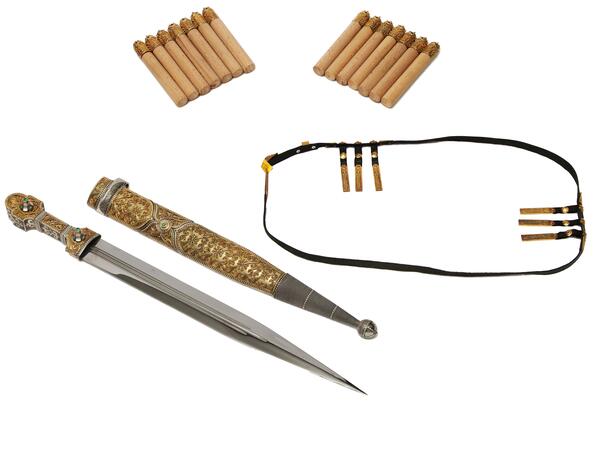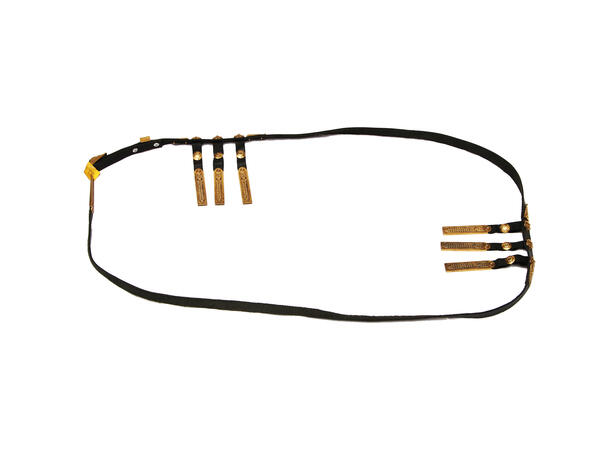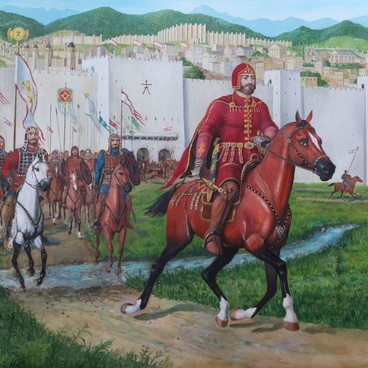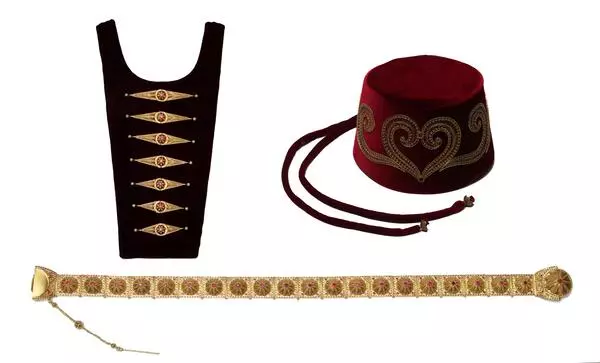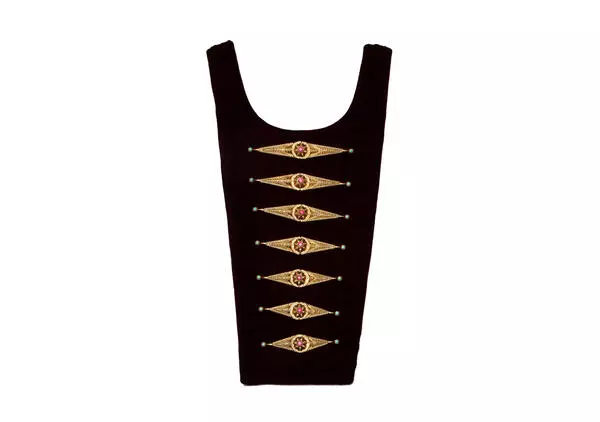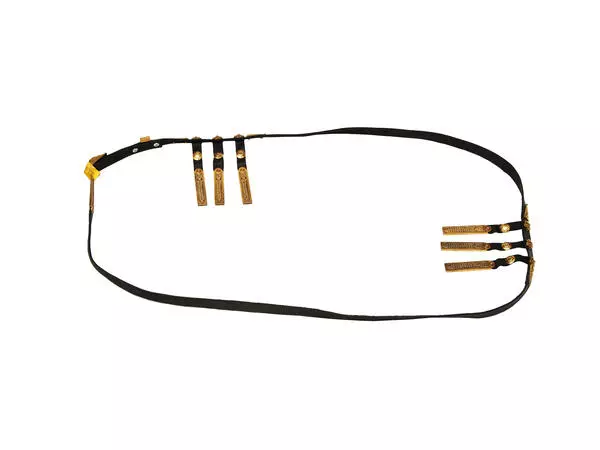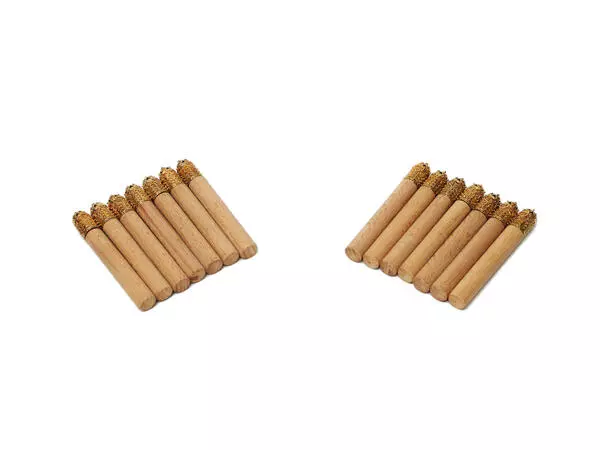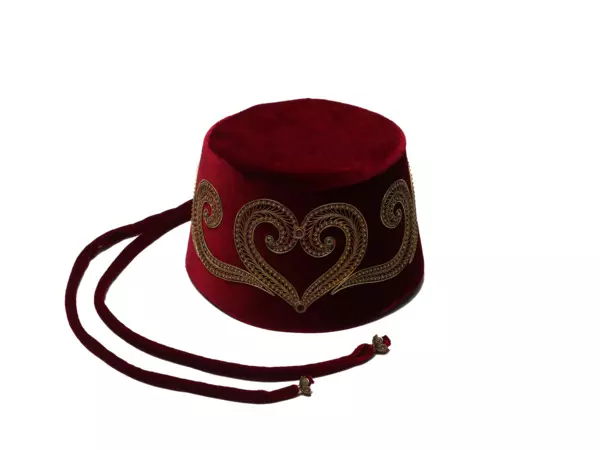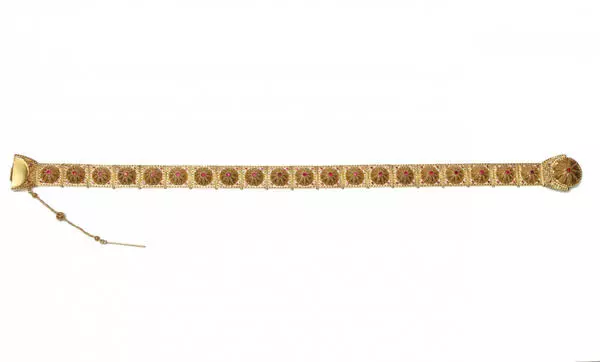The decorated belt is one of the most important elements of the traditional male dress of the Caucasians.
In the past, a dagger, a knife, or other weapons were attached to the belt, as well as a powder flask, pieces of flint, tools, and tinder. Tinder is any easily combustible material like wood chips, waxed paper, or dried fungus. Over time, when the need for such items disappeared, the belt became an element of decoration for the traditional male dress.
Traditionally, these belts were decorated with intricate metal overlays. Some of them were attached to the belt itself, some – to the hanging straps. The number of details on the belt largely depended on the number of the hanging straps – from two to ten. They were attached in pairs on the sides, although belts with one right-sided group of straps or without them were often found, as well. Masters had to learn how to construct such belts.
An extensive study on the decorated belts was published in the journal ‘Soviet Ethnography’ in 1988. An article described the types of belts and metal buckles on them. The author highlighted the differences in decor which depended on the specific region.
He wrote that the Dagestan belts were distinguished by elongated and convex knops-buttons with ornamental contours, various crescents, palmette (elements of floral ornament that resemble fan-shaped leaves of a palm tree or an open palm), stylized pairs of birds’ heads. The Kumyk belts often had oval and flat buckle-buttons and drop-shaped overlays. In Georgia, oval hemispheres and drop-shaped convex buckles were quite prevalent. However, due to the strong cultural ties between the different peoples of the Northern Caucasus, many details of the decor were repeated everywhere, the differences were less pronounced.
The author of the article elaborated on the decor of the hanging straps. There were buckles with a lyre-shaped motif (string instruments), rectangular boxes with finials in the shape of horses, snakes or birds. The literature indicates that there also were duck-shaped overlays.
Various jewelry techniques were used to create the overlays: relief engraving, nielloing, gilded notches, casting according to models. As a result, each belt turned into an original work of applied arts.
The belt displayed in the museum was made by Bekhan Dakhkilgov, the only master in the Republic of Ingushetia who is engaged in the revival of the lost traditions of the Ingush jewelry craftsmanship.
In the past, a dagger, a knife, or other weapons were attached to the belt, as well as a powder flask, pieces of flint, tools, and tinder. Tinder is any easily combustible material like wood chips, waxed paper, or dried fungus. Over time, when the need for such items disappeared, the belt became an element of decoration for the traditional male dress.
Traditionally, these belts were decorated with intricate metal overlays. Some of them were attached to the belt itself, some – to the hanging straps. The number of details on the belt largely depended on the number of the hanging straps – from two to ten. They were attached in pairs on the sides, although belts with one right-sided group of straps or without them were often found, as well. Masters had to learn how to construct such belts.
An extensive study on the decorated belts was published in the journal ‘Soviet Ethnography’ in 1988. An article described the types of belts and metal buckles on them. The author highlighted the differences in decor which depended on the specific region.
He wrote that the Dagestan belts were distinguished by elongated and convex knops-buttons with ornamental contours, various crescents, palmette (elements of floral ornament that resemble fan-shaped leaves of a palm tree or an open palm), stylized pairs of birds’ heads. The Kumyk belts often had oval and flat buckle-buttons and drop-shaped overlays. In Georgia, oval hemispheres and drop-shaped convex buckles were quite prevalent. However, due to the strong cultural ties between the different peoples of the Northern Caucasus, many details of the decor were repeated everywhere, the differences were less pronounced.
The author of the article elaborated on the decor of the hanging straps. There were buckles with a lyre-shaped motif (string instruments), rectangular boxes with finials in the shape of horses, snakes or birds. The literature indicates that there also were duck-shaped overlays.
Various jewelry techniques were used to create the overlays: relief engraving, nielloing, gilded notches, casting according to models. As a result, each belt turned into an original work of applied arts.
The belt displayed in the museum was made by Bekhan Dakhkilgov, the only master in the Republic of Ingushetia who is engaged in the revival of the lost traditions of the Ingush jewelry craftsmanship.

